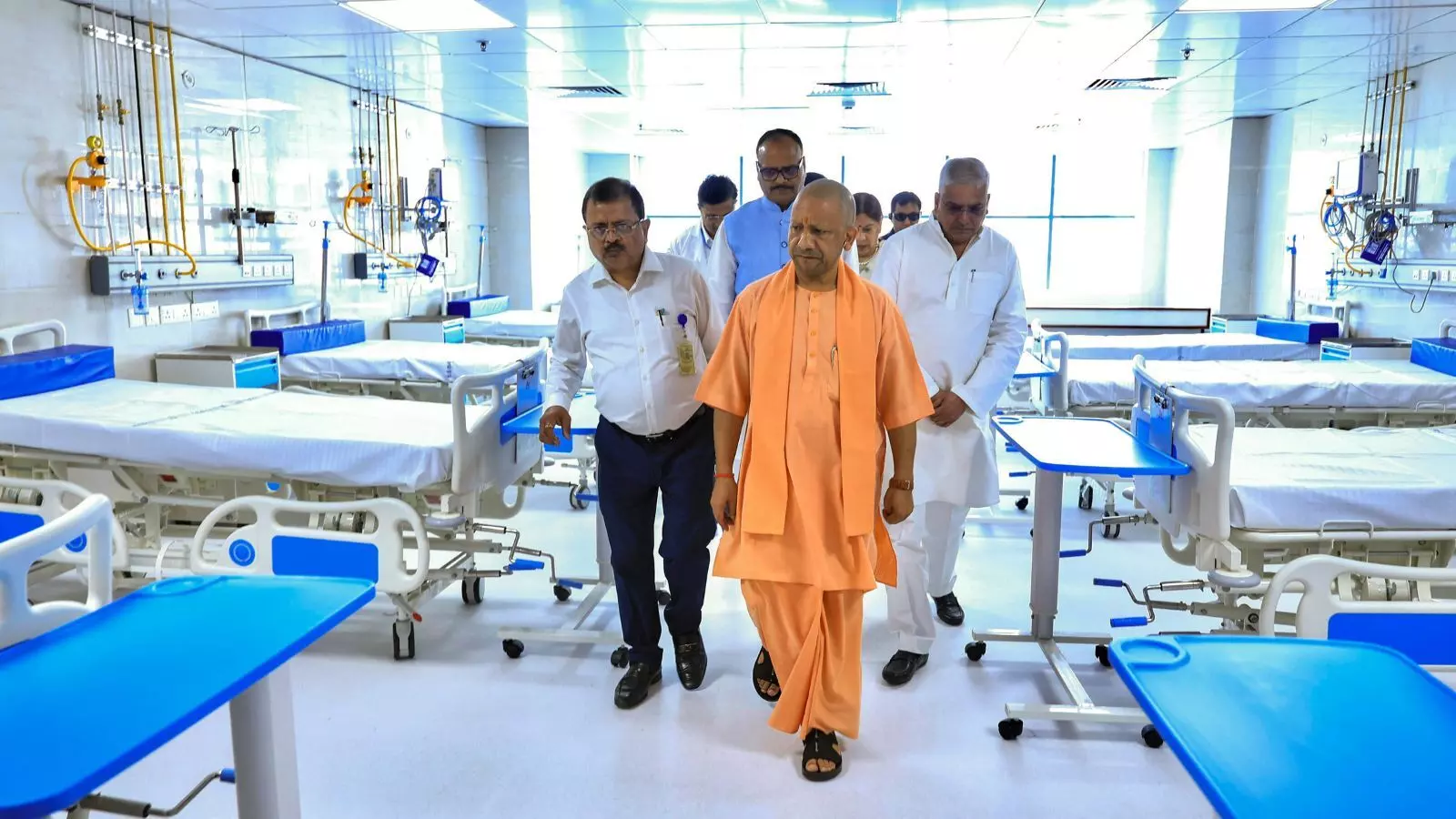
Lucknow, Nov. 20 -- The Yogi government in Uttar Pradesh has introduced wide-ranging reforms to modernize, expand, and enhance the efficiency of healthcare services, ensuring that both urban residents and people living in remote rural areas benefit directly.
From safe delivery services to telemedicine, from free dialysis to emergency ambulance support, the government's initiatives have made the state's health system more responsive, accountable, and people-centric. The steady rise in safe cesarean deliveries in the Prayagraj division, the surge in telemedicine consultations, the growing demand for free dialysis in Jhansi, and the life-saving role of ambulance services in Gorakhpur collectively highlight the rapid transformation and expansion of Uttar Pradesh's health infrastructure.
To provide safe maternity care in rural areas, the Yogi government has significantly strengthened health facilities. Under the National Rural Health Mission, 19 community health centers in the Prayagraj division have been designated as First Referral Units, enabling critical procedures such as cesarean deliveries to be conducted closer to rural populations.
Between April and October 20, 2025-26, a total of 1,569 safe cesarean deliveries were performed in the division, 552 more than the previous year. During this period, 689 procedures were conducted in Prayagraj, 428 in Pratapgarh, 285 in Kaushambi, and 167 in Fatehpur. These rising numbers indicate that women in rural areas are receiving timely, high-quality maternal care and that deliveries are being managed safely, even in previously underserved regions.
Telemedicine through the e-Sanjeevani platform has emerged as a major boon for people in remote areas, making specialist medical advice easily accessible. In October alone, 56,423 patients in the Prayagraj division received teleconsultations, including 28,303 in Prayagraj district. Additionally, 10,899 patients availed of services in Kaushambi, 10,660 in Pratapgarh, and 9,977 in Fatehpur. The division has 1,113 telemedicine centers supported by 1,007 community health officers. This service has been especially beneficial for elderly and disabled individuals. Through the e-Sanjeevani app, patients can connect to OPD and Special OPD services from home via video calls, reducing travel expenses and easing crowding in large hospitals.
In Gorakhpur district, the emergency ambulance service is playing a crucial role in ensuring rapid medical assistance. The district operates 46 ambulances under the 108 service and 50 under the 102 service at the block and tehsil levels. GPS-enabled monitoring has significantly improved response times.
From April 1 to October 31, a total of 72,739 people benefited from this free service. Meanwhile, in Jhansi, the hemodialysis unit at the District Hospital run under a PPP model, has become a lifeline for kidney patients. Between January and October 2025, 753 patients received 7,246 free dialysis sessions. Equipped with 10 advanced machines, the unit provides comprehensive services at no cost, offering critical relief to economically disadvantaged patients who previously struggled to afford private dialysis.
Published by HT Digital Content Services with permission from Millennium Post.
